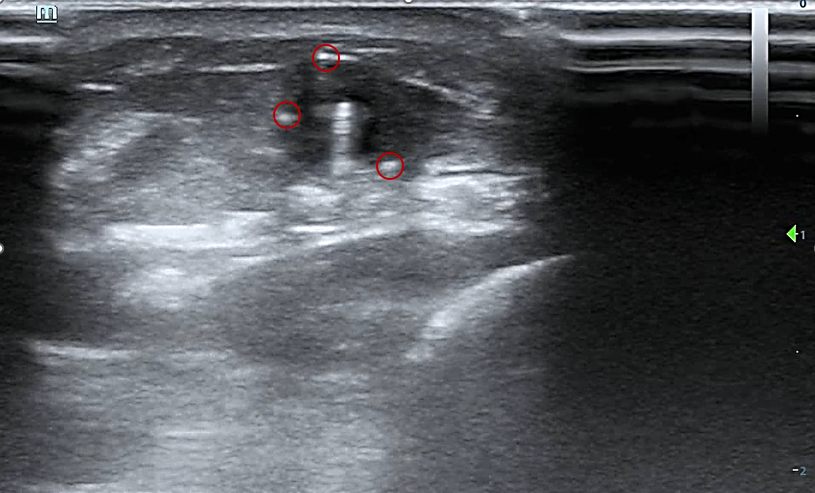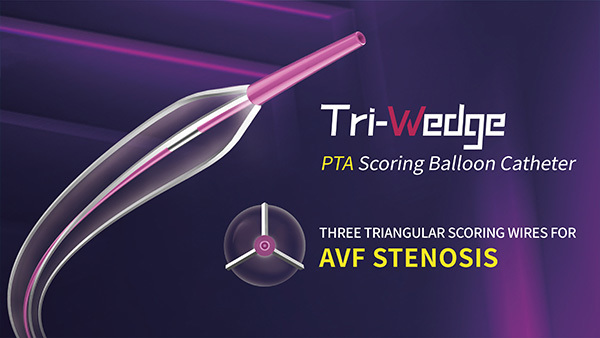Case Interpretation| Application of Tri-Wedge™ in Juxta-anastomotic Stenosis(JAS) of AVF
Release time:
2024-11-27
In the previous issue of case sharing, we presented a complex coronary intervention case, in which the Alveo HP Φ0.75 balloon, independently developed by BrosMed Medical, demonstrated excellent performance in crossing the lesion and dilation, showcasing exquisite craftsmanship of innovation.
In the previous issue of case sharing, we presented a complex coronary intervention case, in which the Alveo HP Φ0.75 balloon, independently developed by BrosMed Medical, demonstrated excellent performance in crossing the lesion and dilation, showcasing exquisite craftsmanship of innovation.
Today, we bring you a new case. Let’s take a look at what other innovative product will help clinical practitioners in this case……
Case information
Patient Information: Male, 62 years old, 68 kg.
Visiting time: June 9, 2020.
Chief complaint: Hemodialysis for 3 years, and arteriovenous fistula (AVF) dysfunction found for 1 week.
History of present illness: The patient had failed left forearm AVF formation 3 years ago, and subsequently underwent a right upper extremity AVF formation. After the maturation of AVF in the right upper extremity, maintenance hemodialysis treatment was initiated. One week ago, the dialysis nurse reported an “arterial pressure alarm”, and outpatient ultrasound examination revealed localized stenosis in the AVF.
Past medical history: Hypertension, and type 2 diabetes mellitus.
Admission examination
Physical examination: No obvious abnormalities were found in general physical examination. A surgical scar was seen on the right forearm, and high-pitched vascular bruit could be heard at the juxta-anastomotic site of the AVF. Palpation revealed tremors and a weak pulsation. No apparent aneurysmal dilation was found in the AVF region of the right upper extremity.
Laboratory tests: Hb 117g/L, Alb 40.0g/L, Cr 1205 μmol/L, Ca 2.08 mmol/L, P 1.39 mmol/L, K 4.65 mmol/L, CO2 23.5 mmol/L.
Ultrasound examination:

Diagnostic result:
▪ Stenosis in autologous AVF and maintenance hemodialysis
▪ Stenosis at the juxta-anastomotic site measured 1.2 mm, intimal hyperplasia, and estimated Qa 250 mL/min
Surgical procedure
01 Balloon dilatation
The Tri-Wedge™ scoring balloon could dilate the narrowed area by passing through the lesion, exerting pressure up to 12 ATM, and then withdrawing.

02 Ultrasound imaging
The scoring balloon catheter with three triangular metallic wires was well-defined, allowing for accurate positioning under ultrasound.
 The balloon catheter was well-defined
The balloon catheter was well-defined
03 Postoperative blood flow monitoring
▪ Estimated Qa 824 mL/min immediately after operation
▪ Estimated Qa 981 mL/min 24h after operation ▪ Estimated Qa 920 mL/min 1 month after operation
▪ Estimated Qa 920 mL/min 1 month after operation
Postoperative summary
Case characteristics:
The patient underwent autologous AVF hemodialysis. During the process, inadequate blood flow was observed. Physical examination revealed a high-pitched vascular bruit and weak palpable tremors.
Assessment of preoperative points:
The physical examination and imaging evaluation of the AVF were performed to determine the site of lesion and estimate the brachial artery blood flow.
Surgical points:
The appropriate vascular access route and balloon catheter model were selected. The balloon was accurately located to the target lesion under imaging guidance, and then gradually inflated by pressure, followed by the withdrawal of balloon catheter. Finally, the surgical outcome was assessed.
Device use points:
The scoring balloon catheter, featured by three triangular metallic wires, is designed for accurate positioning under ultrasound guidance. The balloon is gradually inflated by pressure, enabling the scoring wires to exert the collected pressure on the vessel wall, which improves the success rate of the operation while reducing the expansion pressure.
Clinical Cases
The treatment strategy of left main bifurcation lesions has been a controversial topic in clinic. How to choose the optimal treatment strategy for emergency PCI? Does the choice among different devices help the surgeon more?
2024-11-27
Vascular access is the lifeline for hemodialysis patients. Prolonging the service life of the access, guarding the “lifeline” of hemodialysis and ensuring the smooth flow of the “lifeline” are the top priority in maintaining the vascular access. The emergence of the scoring balloon brings the hope of improving patients’ dialysis access patency rate and reducing pain, and is expected to become a better choice for the treatment of arteriovenous fistula stenosis……
2024-11-27
The common symptoms of severe lower limb calcification include coldness, numbness and intermittent claudication in the lower limbs. In severe cases, there may be persistent pain and weakening or disappearance of dorsal foot artery pulsation, and gangrene may occur when the artery is completely occlusive. Calcified lesions destroy the normal blood vessel wall, causing uneven pressure on the blood vessel wall, thinning of some walls, and changes in hemodynamics, which can easily lead to fixed stenosis, thrombus, aneurysm, and aortic dissection.
2024-11-27
Case Interpretation| Application of Tri-Wedge™ in Juxta-anastomotic Stenosis(JAS) of AVF
In the previous issue of case sharing, we presented a complex coronary intervention case, in which the Alveo HP Φ0.75 balloon, independently developed by BrosMed Medical, demonstrated excellent performance in crossing the lesion and dilation, showcasing exquisite craftsmanship of innovation.
2024-11-27
For acute occlusion with calcification in right coronary artery (RCA), neither PCI microcatheter nor 1.2/1.0 mm balloons can cross the lesion in emergency treatment??? What other device can be considered by operator in elective operation?
2024-11-27












